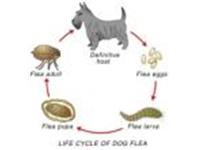
How to give puppies pills
It helps if you relax your puppy by playing with him or her and getting down physically to their level. With large dogs its best to kneel on the floor while smaller dogs can be put on a grooming table.
Place one hand over the top of the puppy’s muzzle and use your free hand to open the mouth and place the pill in the centre of the tonge. Close the puppy’s mouth and blow gently on the end of his nose. This will cause the dog to swallow automatically. Give the dog a treat afterwards.
Finding a Vet
The best recommendation is by world of mouth. Otherwise check the vets qualifications. You should inspect the vets facilities. You should take new pets to see a vet within three days so that they can check the following:
Stool. A faecal exam will reveal the presence of internal parasites.
Body. A thorough physical examination includes inspecting your dog’s coat and feeling his body for abnormalities, as well as checking the eyes, ears, mouth and heart and examining the anus for signs of intestinal parasites.
Following these investigations a vet will recommend any necessary treatments and vaccinations and whether spaying or neutering should be considered.
Unless you are planning to bred it is probably sensible to consdier spaying or neutering. This should be done by the time animals are six months old and has advantages in that male dogs tend to be less aggressive, less likely to mark territory or roam in search of mates. For females, there is no mess to deal with during their 21-day heat cycles, which occur every six months-the heat cycle begins in females sometime after six months of age.
Both operations are performed under general anaesthesia and may require an overnight stay at the veterinary clinic. Recovery time is quick, with most dogs resuming normal activity in a few days. Spaying (for females) consists of an ovario-hysterectomy. Neutering involves the removal of the testicles.
When you bring your puppy to the veterinary clinic for his first thorough examination, have the vet explain the operation in detail and set up a time to have the procedure done.
Fleas
At one time or another, most dog owners will have to deal with fleas. The common flea not only causes your dog discomfort, it also can transmit disease, pass on tapeworms and cause anaemia, especially in vulnerable puppies and older dogs.
Regularly inspect your dog for any signs of fleas. Intermittent scratching, biting and gnawing, plus evidence of flea dirt between your dog’s back legs or on top of his rump, are telltale signs of fleas. If your dog is constantly biting and gnawing himself or you can actually see fleas, you’ve got a full-blown infestation. To check out your dog for fleas, stand him in a bathtub and vigorously rub your hands through his fur. If little dark dots fall on the tub floor, they’re likely either fleas or flea “dirt” (excrement). You’ll know you’ve got fleas if the “dirt” turns red when you rub it into damp tissue or cotton wool.
Flea Control Myths
Garlic and onion repels fleas? Although feeding garlic or onion will give your dog bad breath, it will have absolutely no effect on fleas. On the contrary, feeding large amounts of onion to dogs can produce toxic reactions.
Brewer’s yeast repels fleas? There is no evidence that feeding your dog brewer’s yeast repels fleas.
Prescription flea-prevention products
These products work by preventing fleas from biting or reproducing. Available only by prescription from your veterinarian, these products are administered in either oral or topical (external) treatments once a month to break the flea’s reproductive cycle:
The oral treatment is usually packaged in pill form and will not kill adult fleas already present on the animal. However, usually within 60 days of initiating treatments, the life cycles are broken and fleas do not reappear.
The topical treatment will kill adult fleas and provide almost immediate relief in addition to preventing eggs from hatching. This is the flea control method of choice, and when used as directed, most owners report dramatic improvements in their pets’ condition.
